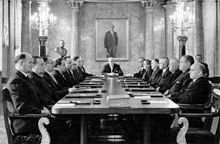
The prime minister of Finland is the leader of the Finnish Government. The prime minister and their cabinet exercise executive authority in the state. The prime minister is formally ranked third in the protocol after the president of Finland and the speaker of the Parliament. Finland's first prime minister, Pehr Evind Svinhufvud, was appointed on 27 November 1917, just a few days before the country declared its independence.
The University of Tampere (UTA) was a public university in Tampere, Finland that was merged with Tampere University of Technology to create the new Tampere University on 1 January 2019.
A minister is a politician who heads a ministry, making and implementing decisions on policies in conjunction with the other ministers. In some jurisdictions the head of government is also a minister and is designated the ‘prime minister’, ‘premier’, ‘chief minister’, ‘chancellor’ or other title.

Paimio is a town and municipality of Finland.
Parliamentary elections were held in Finland on 6 and 7 July 1958. The communist Finnish People's Democratic League emerged as the largest party, but was unable to form a government.
Parliamentary elections were held in Finland on 4 and 5 February 1962.
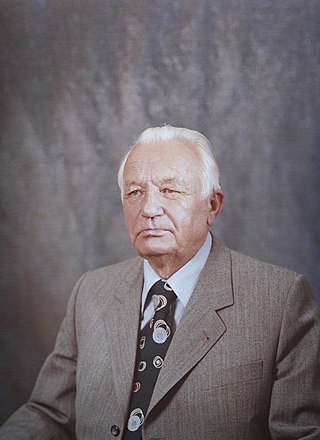
Vieno Johannes (V.J.) "Jussi" Sukselainen, was twice Prime Minister of Finland and four times Speaker of the Parliament. He was President of the Nordic Council in 1972 and 1977. He also served as the fourth Director General of Kela, the Finnish social security agency, from 1954 until 1971.
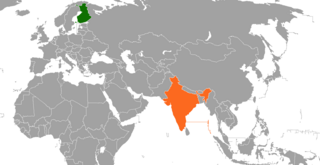
Finland maintains an embassy in India in New Delhi, and honorary consulates in Bangalore, Chennai, Kolkata and Mumbai. India has an embassy in Helsinki, that is also jointly accredited to Estonia.
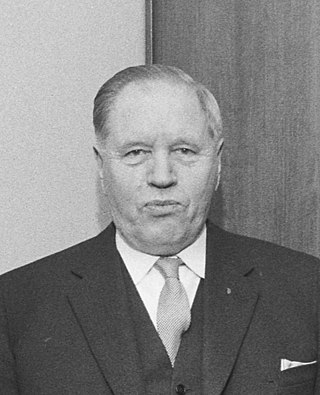
Eemil Vihtori Luukka was a Finnish politician from the Agrarian League and most remembered as an advocate of Karjalan Liitto.

Björn Georg Wilhelm Westerlund, titled Vuorineuvos, was a Finnish businessman and a short-time minister in the government of Finland. He was the former and first President and CEO of Nokia Corporation that was formed in a 1967 merger between the three Finnish companies Nokia Company, Finnish Rubber Works and Kaapelitehdas. He was the CEO until his retirement in 1977. He remained Chairman of the Board until 1979.
Vieno Johannes Sukselainen's first cabinet was the 41st government of Republic of Finland. Cabinet's time period was from April 27, 1957, to November 29, 1957. It was Minority government.

The Finnish Rural Party was an agrarian and populist political party in Finland. Starting as a breakaway faction of the Agrarian League in 1959 as the Small Peasants' Party of Finland, the party was identified with the person of Veikko Vennamo, a former Agrarian League Member of Parliament known for his opposition to the politics of President Urho Kekkonen. Vennamo was chairman of the Finnish Rural Party between 1959 and 1979.
Olli Johannes Uoti was a Finnish social scientist and politician.
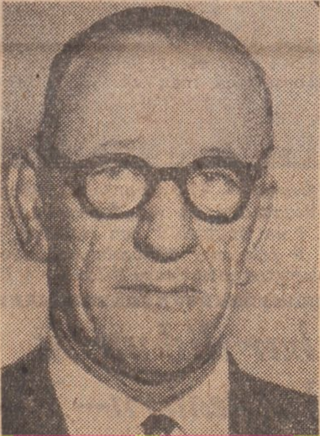
Valdemar (Vladimir) Liljeström was a Finnish trade union activist and politician. He was at first a member of the Social Democratic Party of Finland and, after 1959, of the Social Democratic Union of Workers and Smallholders. He served as the chairman of the Metalworkers' Union from 1947 until 1960, as Minister of Social Affairs in Karl-August Fagerholm's first cabinet, Deputy Minister of Public Works in Vieno Johannes Sukselainen's first cabinet, Minister of Social Affairs in Reino Kuuskoski's cabinet and as a Member of Parliament.
Pekka Kullervo Malinen was Ambassador and Minister and Diplomat. He served as the party secretary of the Finnish People's Party in the 1950s. Male's parents were the farmer Esko Malinen and his wife Hilda Junttu. During the Second World War, Malinen served in the Waffen-SS volunteer battalion recruited by Nazi Germany as an SS-Unterscharführer.

The Social Democratic Party of Finland is a social democratic political party in Finland. It is the third largest party in the Parliament of Finland with 43 seats.

The Night Frost Crisis or the Night Frost was a political crisis that occurred in Soviet–Finnish relations in the autumn of 1958. It arose from Soviet dissatisfaction with Finnish domestic policy and in particular with the composition of the third government to be formed under Prime Minister Karl-August Fagerholm. As a result of the crisis, the Soviet Union withdrew its ambassador from Helsinki and put pressure on the Finnish government to resign. The crisis was given its name by Nikita Khrushchev, who declared that relations between the countries had become subject to a "night frost".
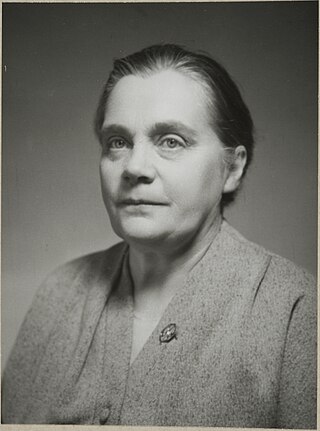
Vieno Simonen was a Finnish politician and farmer. A member of the Agrarian League, she represented Kuopio East in the Parliament of Finland from 1948 to 1962. After serving in deputy ministerial positions in the Kekkonen IV, Törngren, and Fagerholm II cabinets, she was twice appointed as minister of social affairs by prime ministers V. J. Sukselainen and Martti Miettunen, and held the position from 1959 to 1962.

Kerttu Saalasti was a Finnish politician who was the Finland Minister of Education from 1954 to 1956 and from May 1957 to November 1957. She was the first female Minister of Education in Finland, and introduced the legislation that established the University of Oulu. A member of the Agrarian League, Saalasti also represented Oulu in the Parliament of Finland from 1948 to 1962 and from 1966 to 1970.
